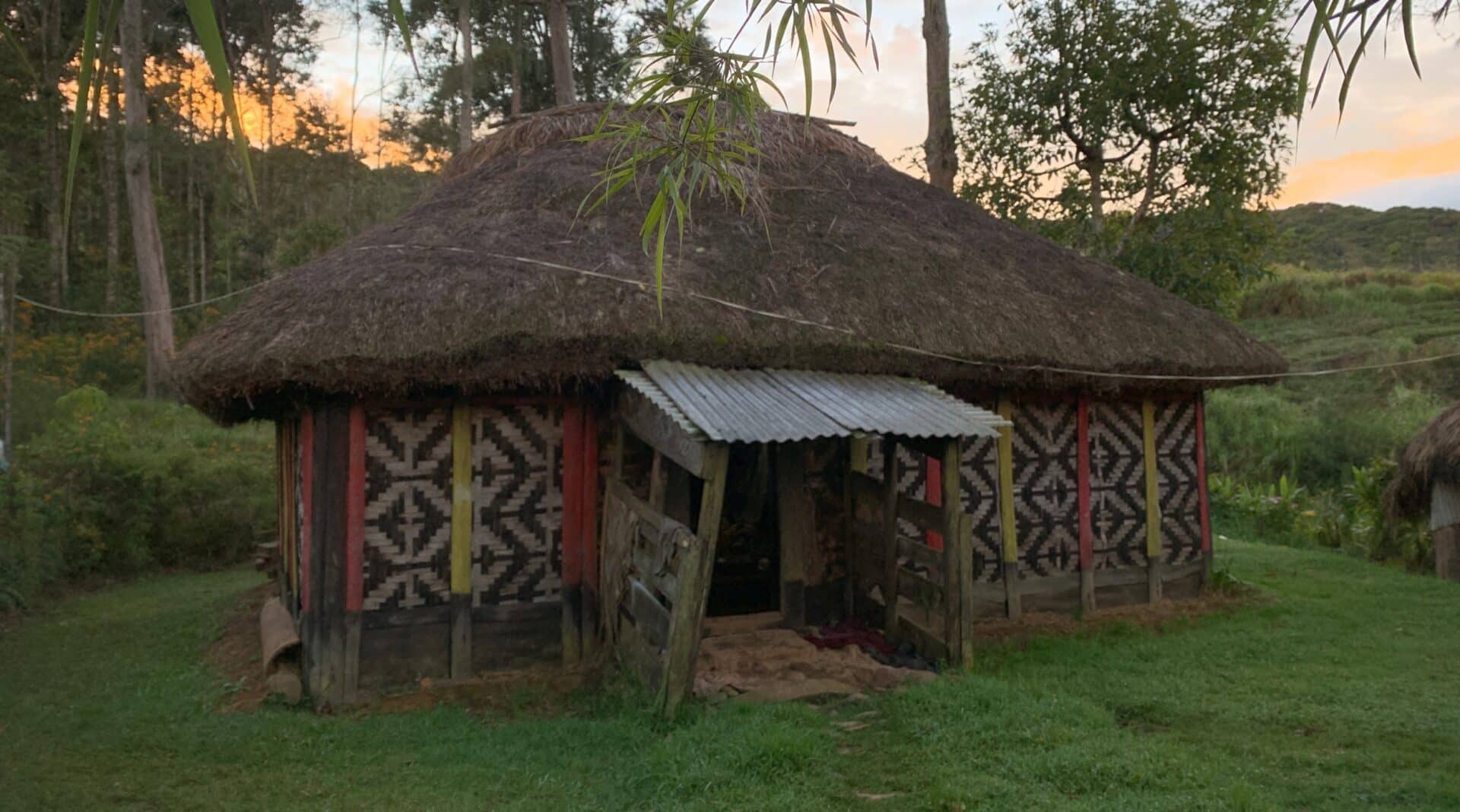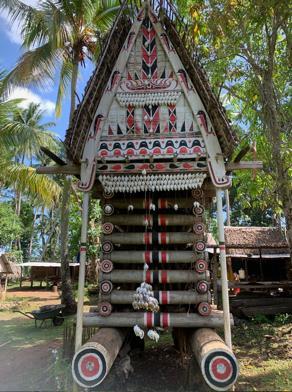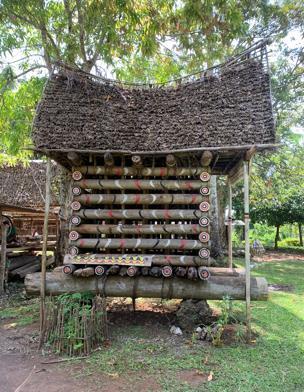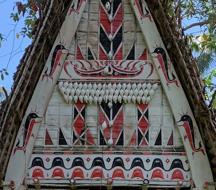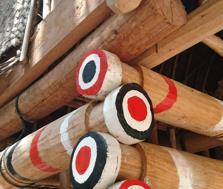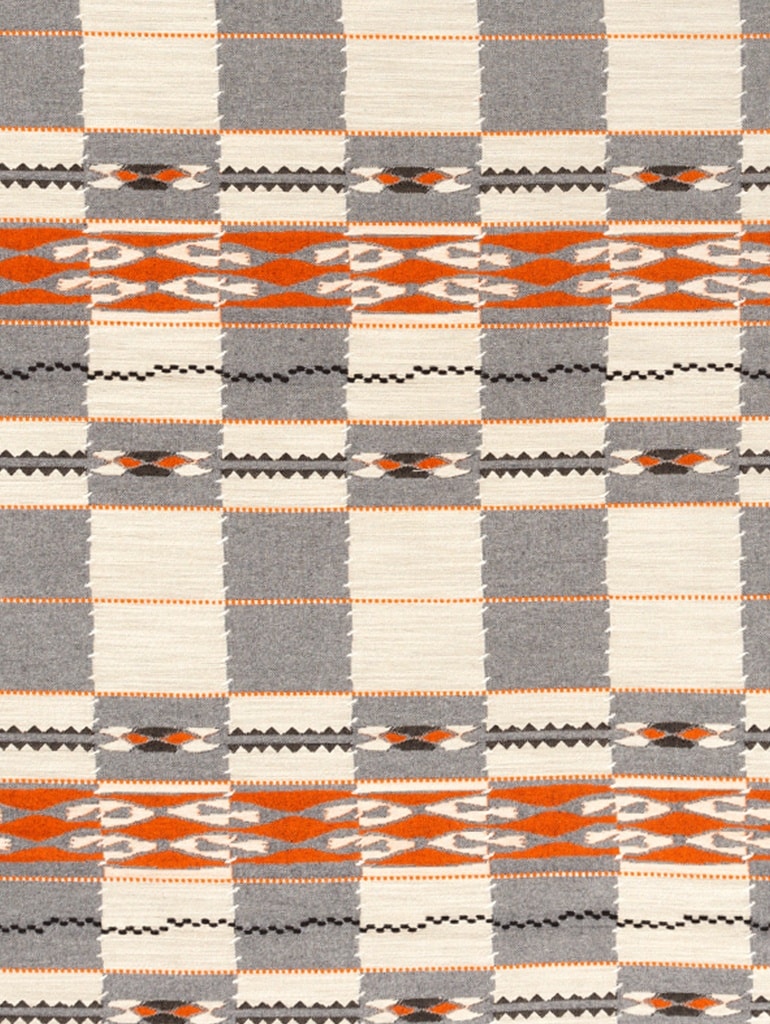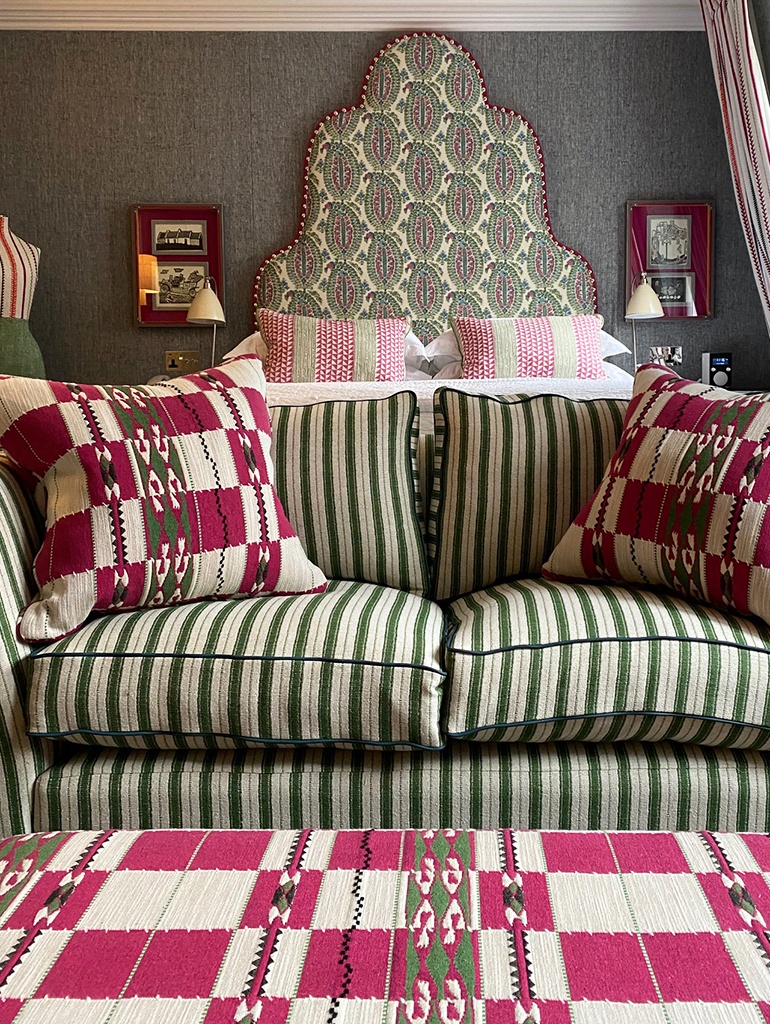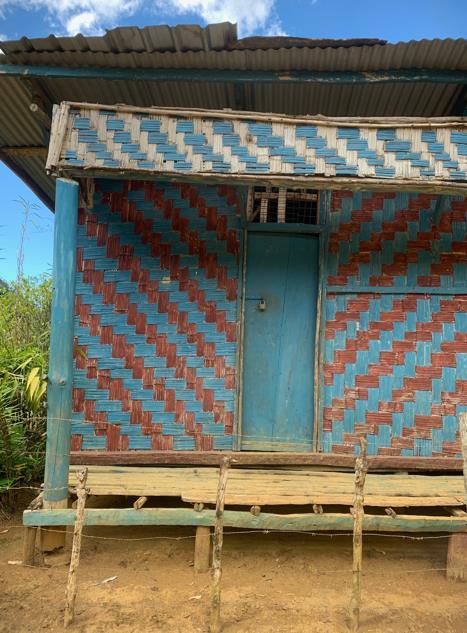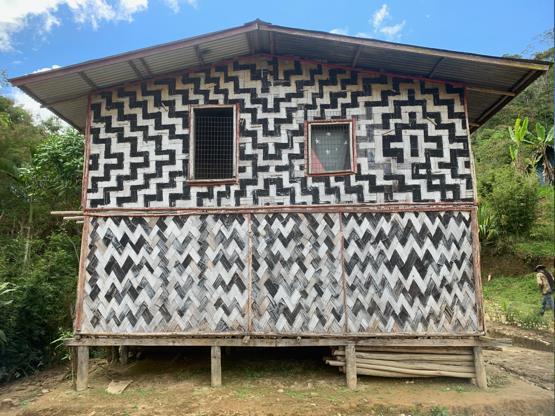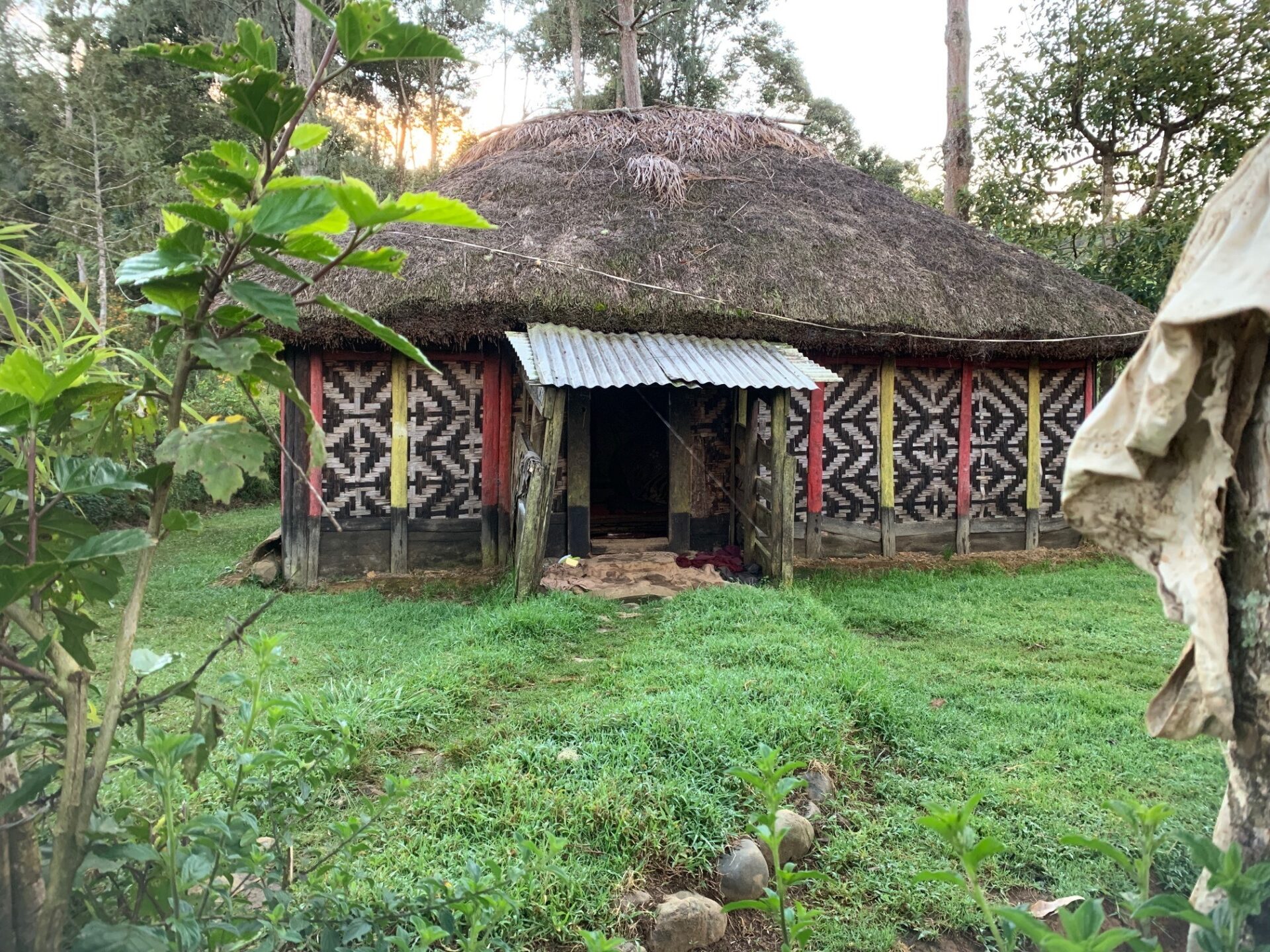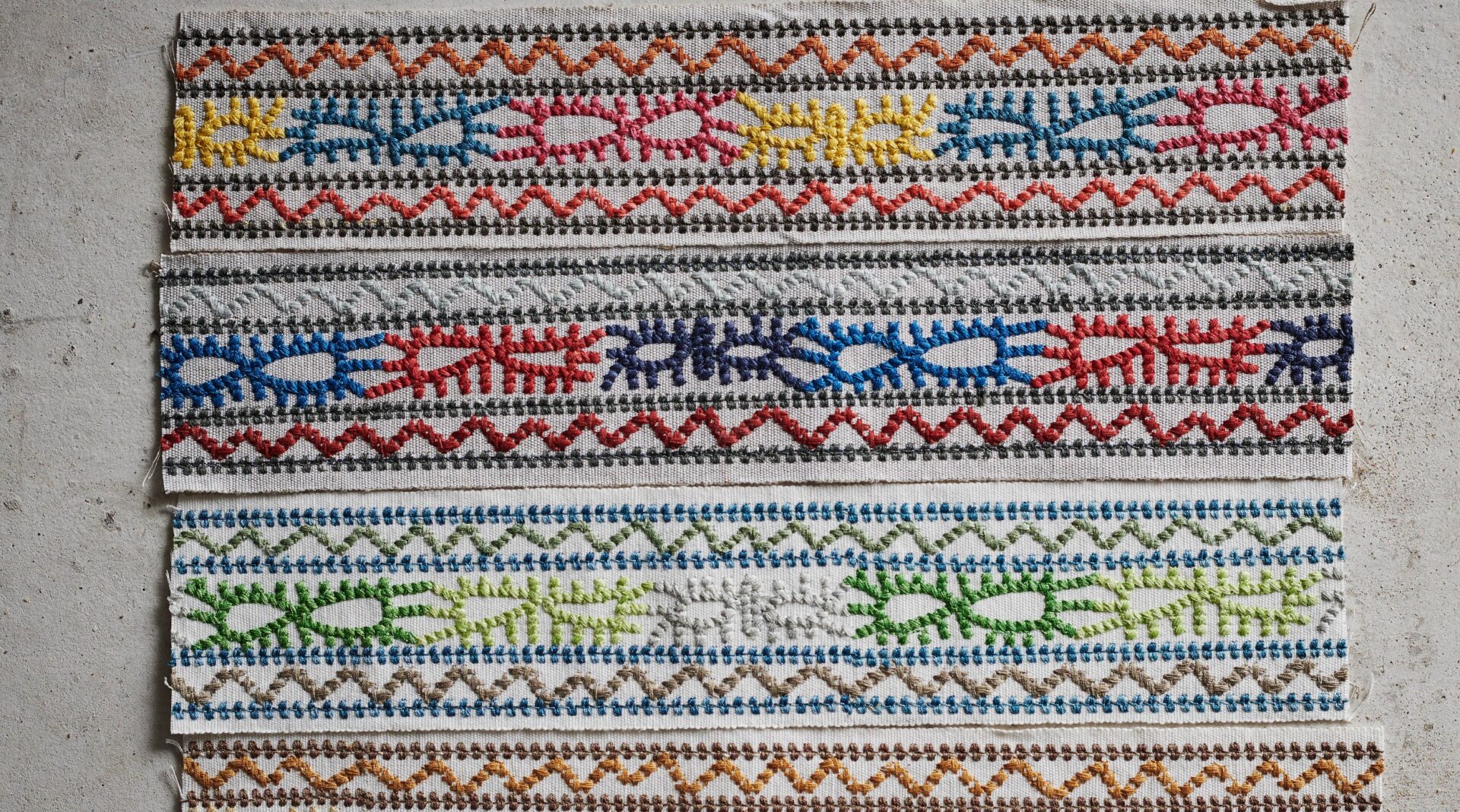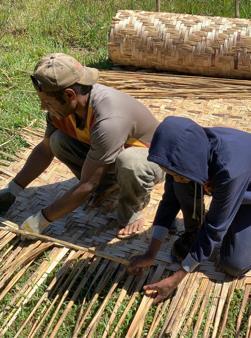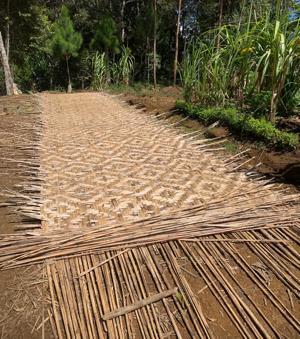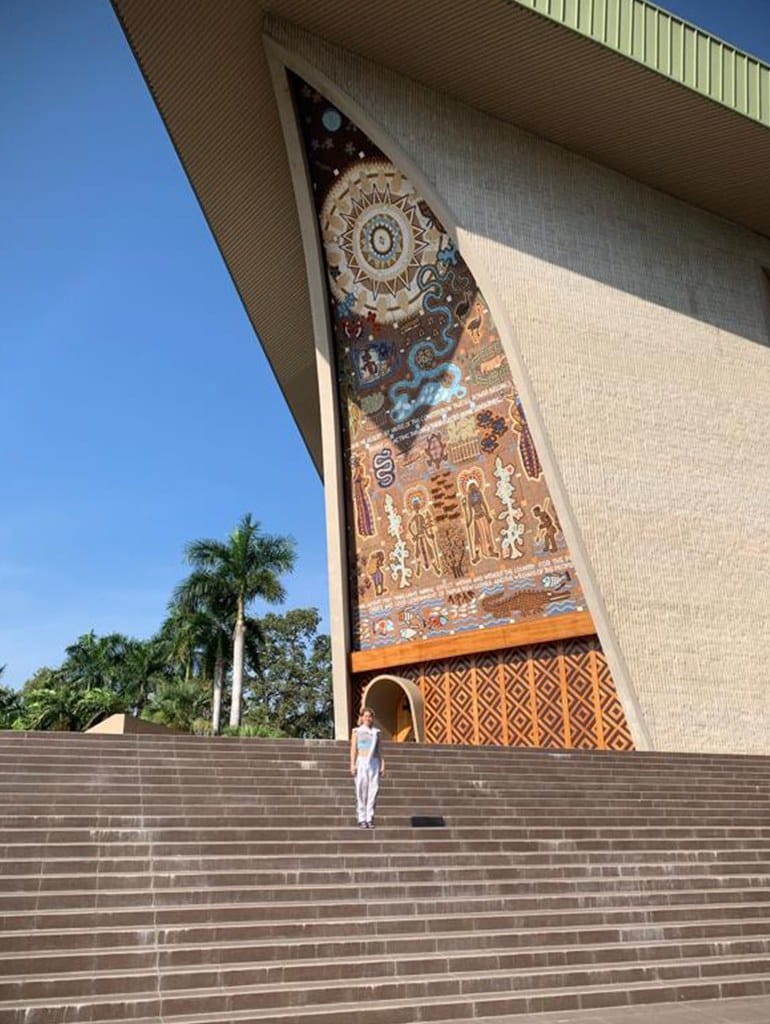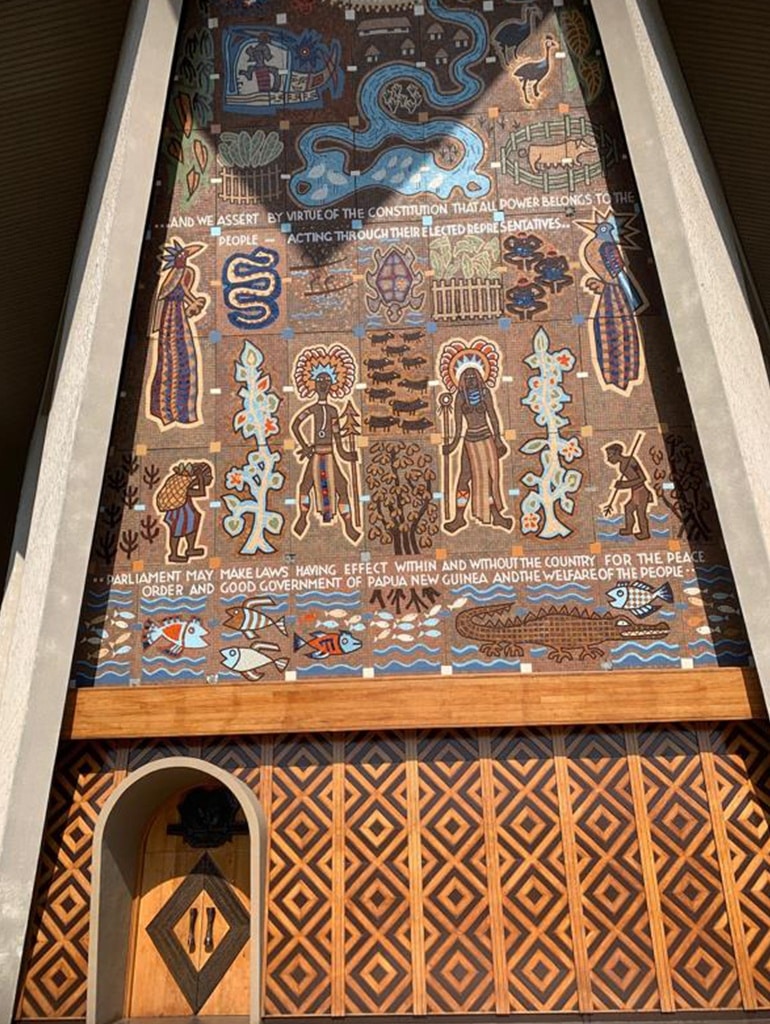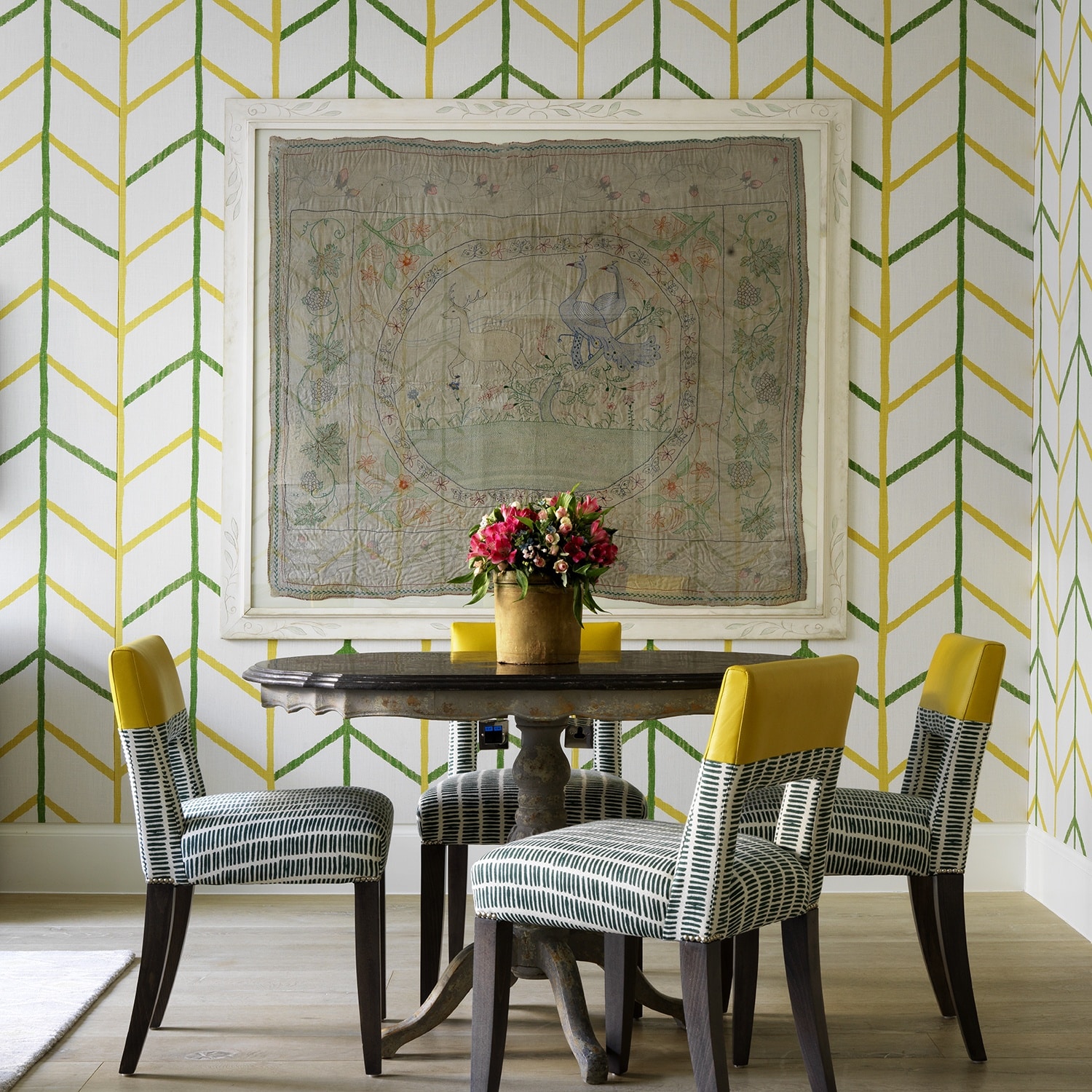This has been a very good time to stop, think and organise. With more time at home, I have loved harnessing this extra time to look back at my trips and make inspirational mood boards for future fabric collections. I would like to share with you the ceremonial, spiritual and cultural buildings from the Papua New Guinea trip I did in 2019.
In the Trobriand Islands, Yam Houses are indicators of a man’s wealth and hierarchy.
As the name suggests, the structures are used to store yams, a common root vegetable grown on the island. The most impressive yams of the harvest will be put on display in the Yam House for all to see.
I love these colours and joyful use of shells native to the coral island. Our new weave designs for Christopher Farr ‘Chubby Check’ have been inspired by these wonderful houses. We have played with the colours to make the design more contemporary.
Driving from Lae into the Morobe province highlands, I was thrilled and surprised to spot these incredible woven houses.
The locals use Sago leaves, banana leaves and palm leaves to create the woven walls.
I love this house with the black and white weave, split with colourful painted wooden strips. It reminds me of one of Mary Restieaux’s ikat weaves. We have been inspired by these to create this braid ‘Caravanne’ for Christopher Farr Cloth. They look fantastic on the leading edge of a curtain or running around the base of a wing chair.
I find one of the most beautiful traditional housing styles to be that of the highlands where they use woven pitpit blind walls and Kunai thatch roofing. Pitpit is a long grass which grows to about 3 metres high. The houses are built low to the ground to keep the interior warm from the cold climate, while the thatch ceiling is high to keep the smoke away while cooking.
Here, a father and son are preparing weaves to create their houses.
When Papua New Guinea became a sovereign state in 1975, the government initiated a building program to foster the ideals of nationhood.
Parliament Haus, built in 1979, embodied the vision of national identity, pride and progress. The front entrance of the building is modelled on the Haus Tambaran and decorated with a 63-foot high mosaic that represents Papua New Guinea’s multiplicity of cultures. I find it interesting to see how they have translated the woven sago tree techniques using harder woods.
The bold geometric design at the bottom of the building is reminiscent of our raffia wallpaper ‘One Way’ designed for Christopher Farr Cloth.

